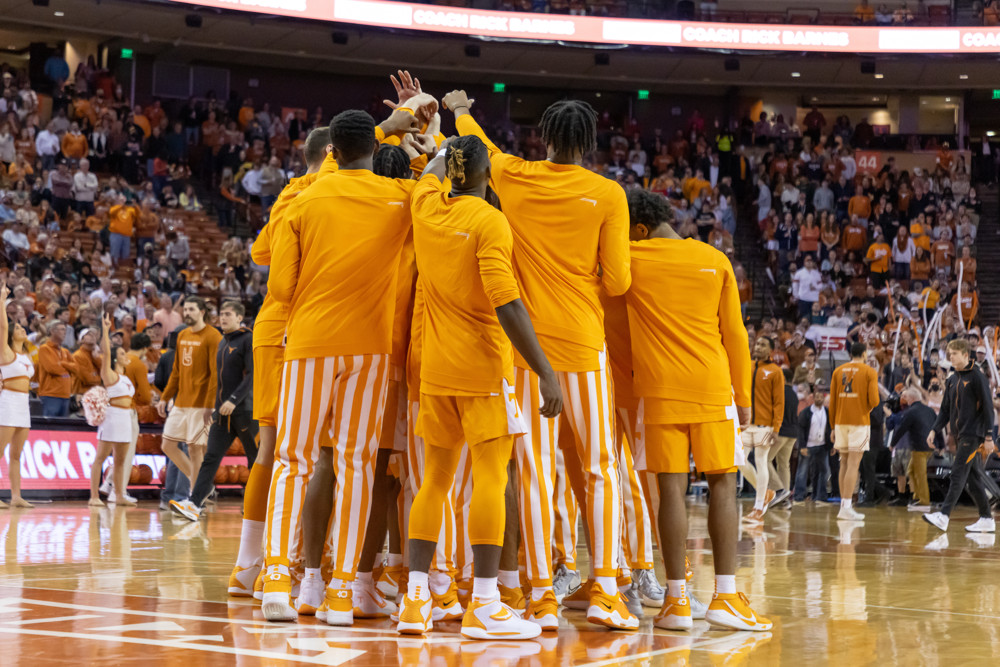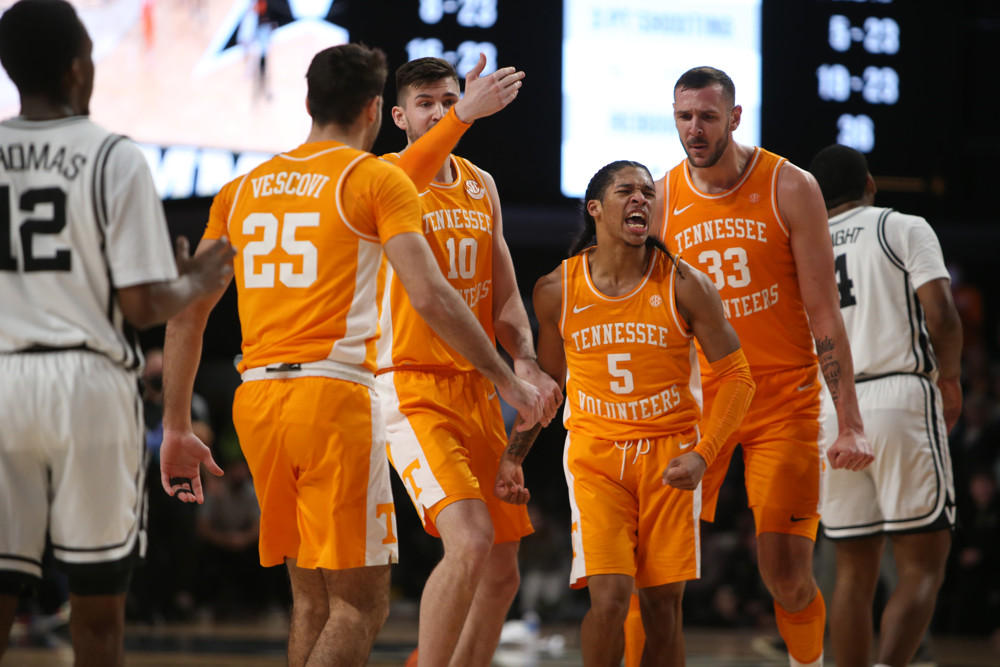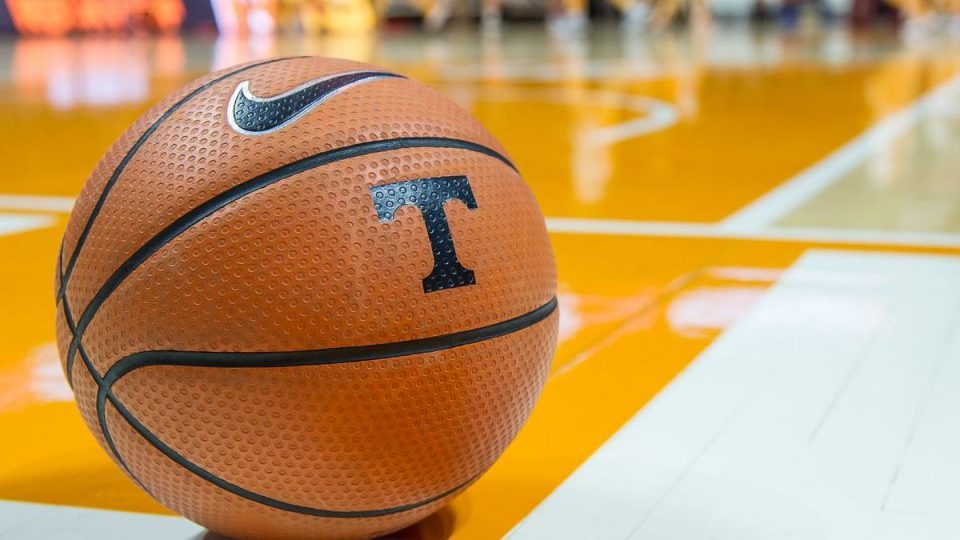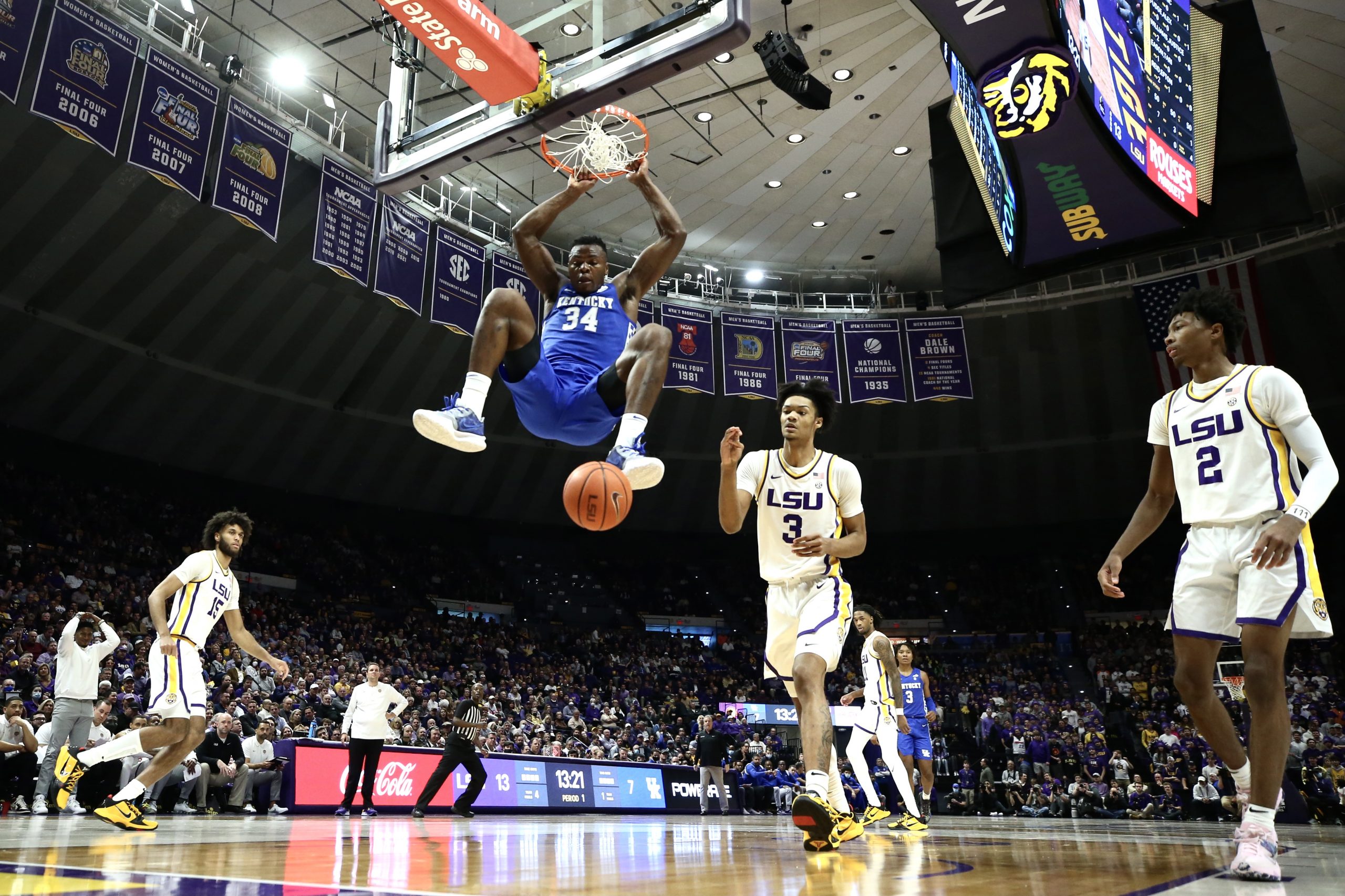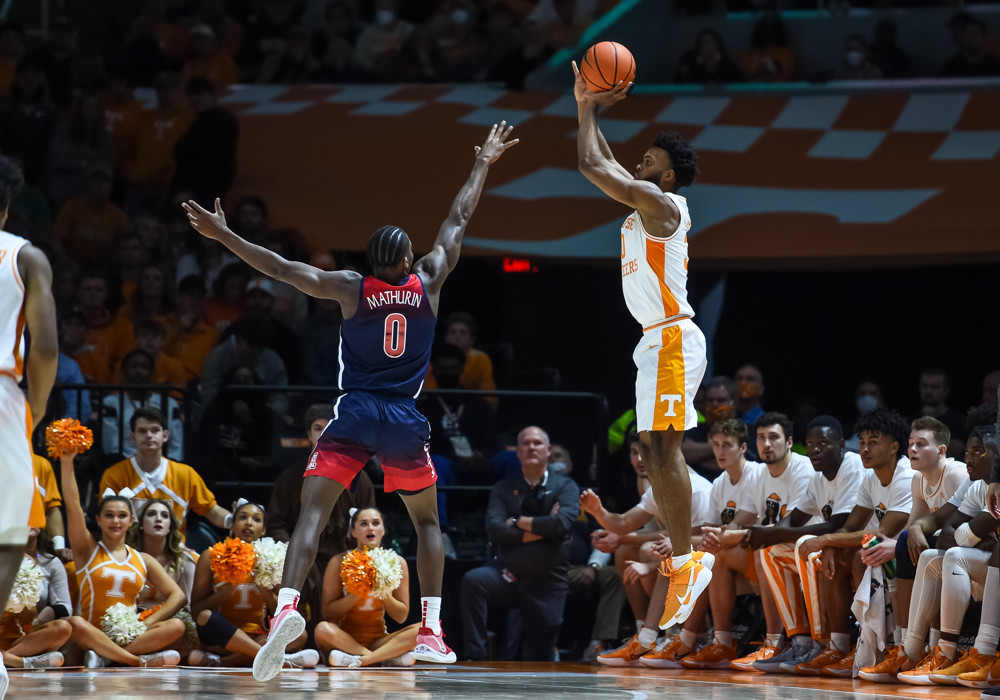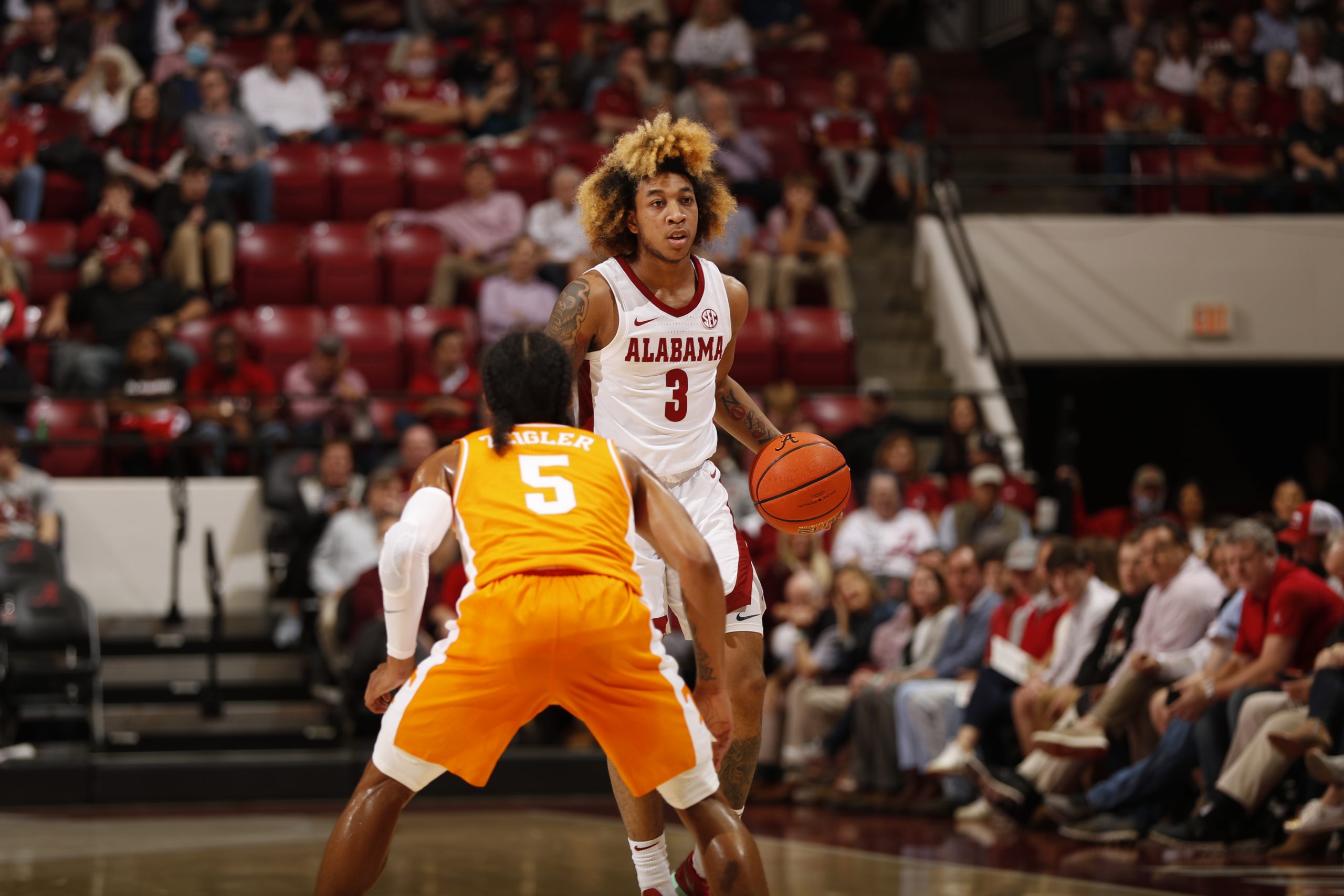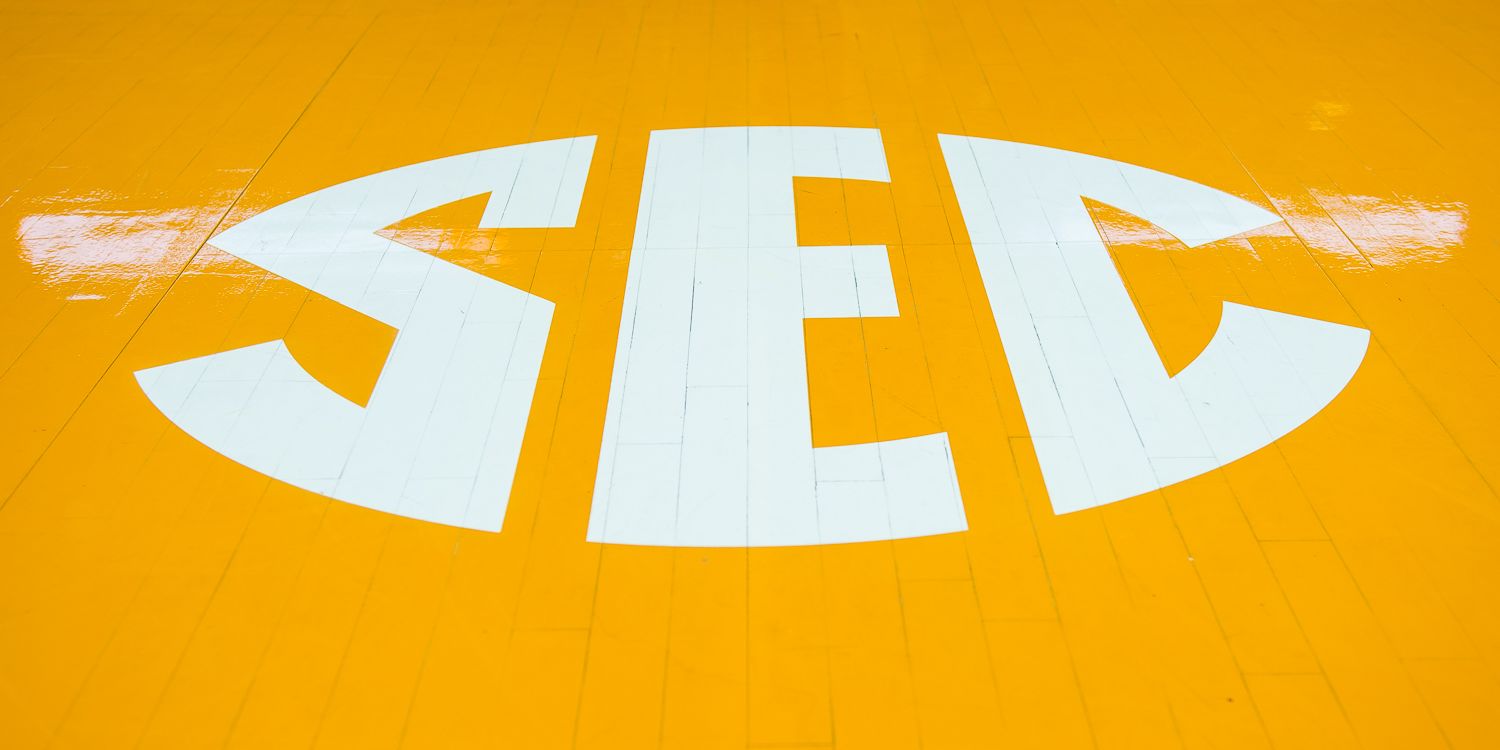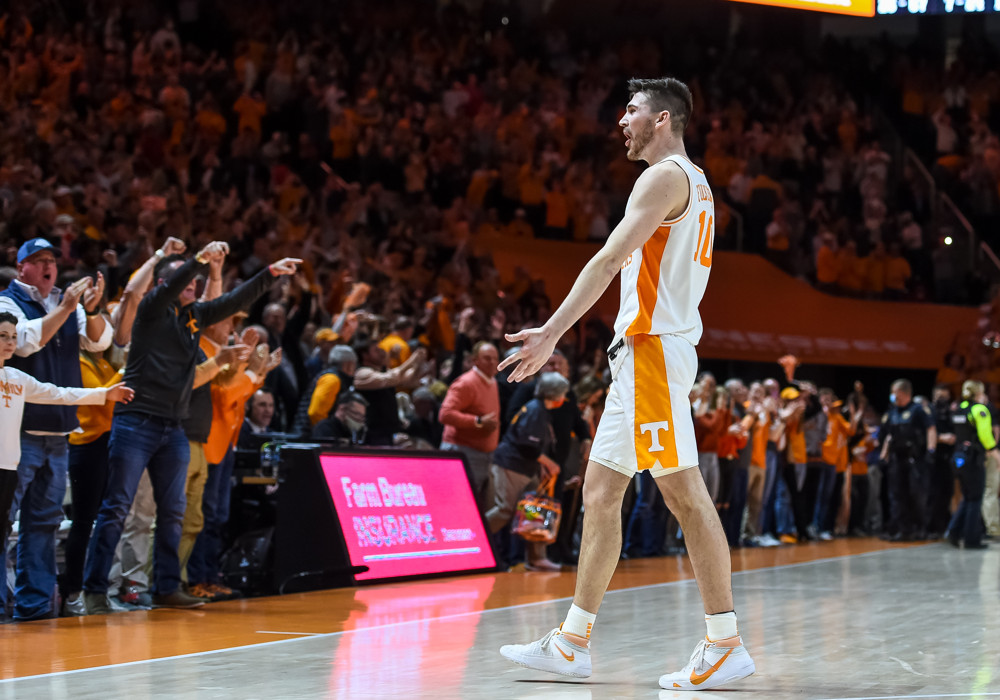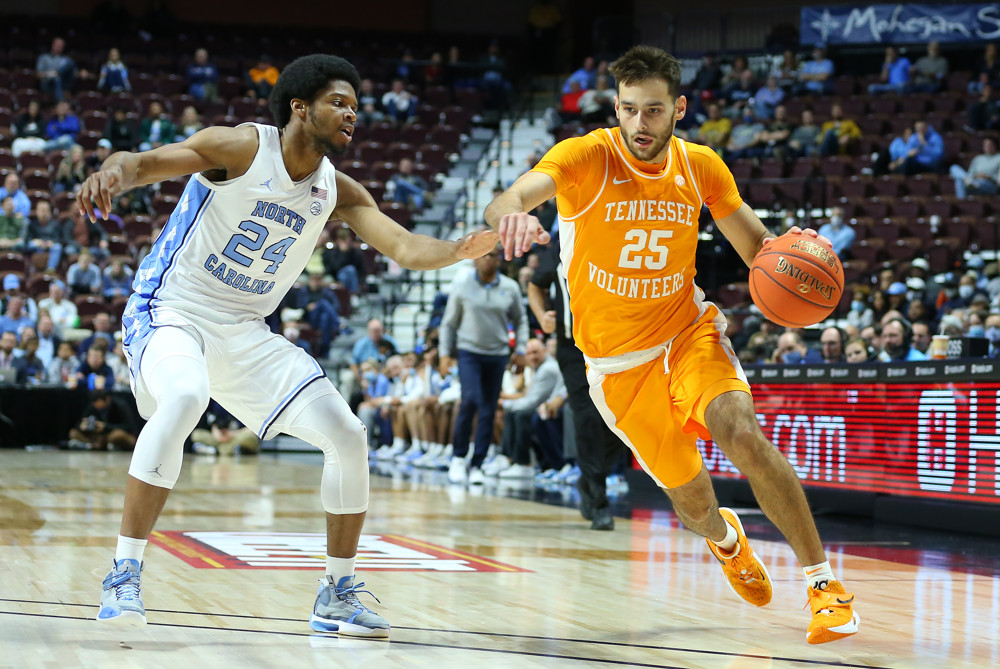Let’s start with some good news:
- Average KenPom rank of Tennessee’s previous 10 opponents: 41.9
- Average KenPom rank of Tennessee’s next 10 opponents: 74.0
The Vols went 6-4 in the previous 10, earning Quad 1 home wins over Arizona and LSU along with four Quad 1 road losses. The upcoming last 10 games feature the two huge showdowns in Knoxville with Kentucky (February 15) and Auburn (February 26). But road tests in Starkville (February 9) and Fayetteville (February 19) should also check the Quad 1 box.
We come to February believing the Vols probably are who the schedule says they are: each of our six losses are road/neutral to a KenPom Top 20 foe, and the Vols are undefeated against such foes in Knoxville. North Carolina has righted the ship for the moment, making that a third Quad 1 win for Tennessee.
Both KenPom and Bart Torvik project the Vols to finish 7-3 in these final 10 games, ending the regular season at 21-9 (12-6). That conference number should be enough to earn a double bye in the SEC Tournament. One big question as bracketologies begin to heat up: how will the selection committee treat the best SEC of our lifetimes?
If the Vols hit their projected 21-9 mark, they’d be around the midpoint of Tennessee’s NCAA Tournament teams in the KenPom era:
Tennessee’s Tournament Teams in the Regular Season, 2002-22
- 2008: 28-3
- 2019: 27-4
- 2006: 21-6
- 2010, 2018: 23-7
- 2007: 22-9
- 2022: 21-9 (projected)
- 2021: 17-7
- 2014: 20-11
- 2009: 19-11
- 2011: 18-13
However, if you rate those teams in KenPom:
Tennessee’s Tournament Teams in KenPom, 2002-22
- 2019: 26.24
- 2014: 23.69
- 2022: 22.97 (current)
- 2018: 22.27
- 2008: 22.17
- 2021: 19.95
- 2006: 19.44
- 2010: 18.50
- 2007: 18.29
- 2009: 16.48
- 2011: 12.41
Play-for-play, this Tennessee team is in the conversation with any of the non-2019 versions for the second best Vol squad of the last 20 years. Far more of those plays are getting made defensively than offensively with this group, but it’s still enough to make them one of the best teams we’ve seen around here.
Ultimately this will all get decided in March, of course. Last season, with all its covid weirdness, isn’t one you’d trade for any of the next three on that KenPom list, even though the 2021 Vols would’ve been slight favorites on 2006, 2007, or 2010. All the 2022 version can do is give themselves their best chance to advance, and continue to try to find their best basketball going forward. I’ve yet to figure out if playing lots of different lineups in crunch time against Top 20 foes is a good thing (versatility!) or a bad thing (inconsistency!).
But if they are who the schedule says they are, #nobadlosses will make this next portion seem a little more friendly, starting tonight with Texas A&M.
The Vols are currently a four seed in the Bracket Matrix and Bart Torvik’s predictive bracketology. Same as we said last year: there’s particular value in getting to a three for a program that’s only been to the Elite Eight once. If you can get to three, you won’t see the very best teams in the land until the round of eight. Good news/bad news there for Tennessee: Kentucky and Auburn might be two of the very best teams in the land. Arizona might make three.
It may feel like the argument for the Vols getting to a three will depend on getting another huge win over the Cats and/or Tigers in Knoxville, but we’ve got some time until then. That means this next stretch – A&M, at South Carolina, at Mississippi State, Vanderbilt – is a great opportunity to find more consistency on the offensive end. Do that, stay in the Top 25, and give yourself a chance to move up in the national conversation when you host the Cats two weeks from tonight. Tennessee can’t solve all their problems or get north in a hurry in your favorite bracketology. But by putting more notches in the win column in the SEC, they’ll give themselves a chance to be considered as part of an elite upper crust, that could truly send five teams from this conference among the Top 16 seeds.
We’ll find out about that soon with the projected bracket reveal from the NCAA; the Lady Vols were the last number one seed in theirs. That’ll be a great indicator of how the committee truly sees the SEC, and in particular Auburn, Kentucky, Tennessee, LSU, and Alabama.
The chances for trajectory-changing wins are still out there. Until then? Good old fashioned regular wins can still do wonders for UT’s seed in this league.
